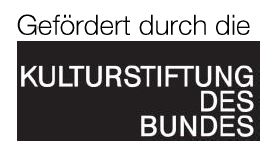War and Grammar
Mohamed Nur: Audio-Visual Traces from the Colonial Archive
Beginning on October 23rd, sound recordings of prisoners of war from the First World War will be rendered audible as historical sources in the exhibition at the Zwischenraum (A Space Between). One of these prisoners was Mohamed Nur. The young intellectual from Somalia had travelled to Germany with an ensemble for an ethnological exposition and was detained during the First World War. In the prisoner-of-war camp, phonographic recordings were made of him. In 1917, he became a language assistant at the Hamburg Institute for Colonial Languages, where he helped to create a Somali grammar. The exhibition at the Zwischenraum addresses the spoken texts and images of him as traces of colonial production of knowledge and its contradictory, often racist and exoticizing visual representation in Germany.
Curated by Anette Hoffmann, with sound installations of historical recordings. Supported by the Museum Kunstpalast, Lautarchiv Berlin, Berliner Phonogramm-Archiv, Academy of Fine Arts Vienna, FWF.
This project is supported by the “Initiative for Ethnological Collections” of the Kulturstiftung des Bundes (German Federal Cultural Foundation)
